Archives of Loren Williams Fly Tying Tutorials.
Chartreuse One Material Comet
Fly and photos by Loren Williams
The Comet is a Pacific Northwest pattern originally tied in California by Lloyd Silivius. It has evolved into a series of flies (including the Boss) rather than a unique pattern. This evolution speaks volumes to it's effectiveness as an irritating or curiosity-piquing pattern rather than an imitative menu item.
My use of this pattern for Chinook and Coho salmon has also evolved. My education is never-ending and I pay close attention to those folks that I respect. The comet is a staple in these folks arsenal, and mine. My style of fishing for salmon requires a pattern that is highly visible to the fish, large enough to make them feel uncomfortable, has inherent action, get's down quickly in heavy water, and is easy and cheap to tie. This pattern fits that bill to a "tee."
Still, every season finds me playing with new materials. Some are improvements over last year, some are not. This tutorial shows how I tie this great fly using only one material. Here, I am using Hareline Dubbing's "Iceabou" available at Whitakers Sport Shop. I also use Pearl Crystal Minnow Flash by Mad River dubbing, also available at Whitakers. You can use anything you like...it only needs to have sufficient length and durability to tie the fly.
Let's get to it.
Material List
Hook: Mustad 7970 #2
Weight: .03" or .035" lead wire (optional)
Thread: Danville's Fly Master Flat Waxed "A" Nylon-color to match or contrast body
Eyes: Chrome XL bead chain
Tail, Body, Hackle: Chartreuse Iceabou
Click photos to emlarge!
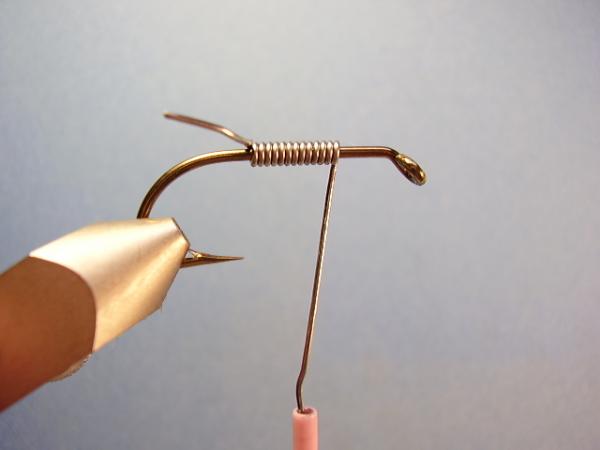
Mount your hook well back in the vise, or in the appropriate hook pocket. Begin by wrapping about 10 to 12 turns of lead wire. I weight about half of my patterns for dealing with swift runs or high flows.
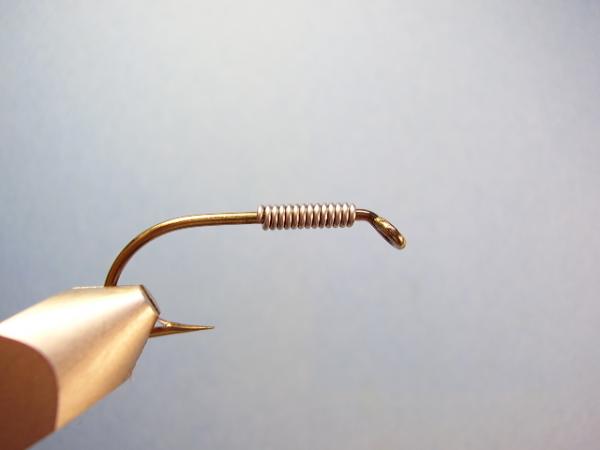
Wiggle each end of lead wire to break it cleanly at the hook shank.
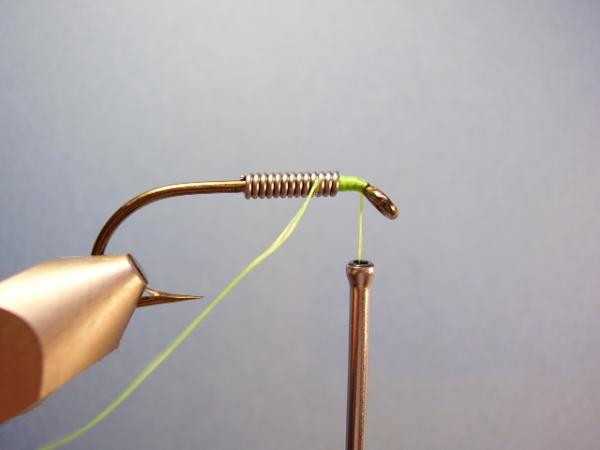
Start your thread by catching a few turns of lead to keep it from sliding. Wrap to the eye.
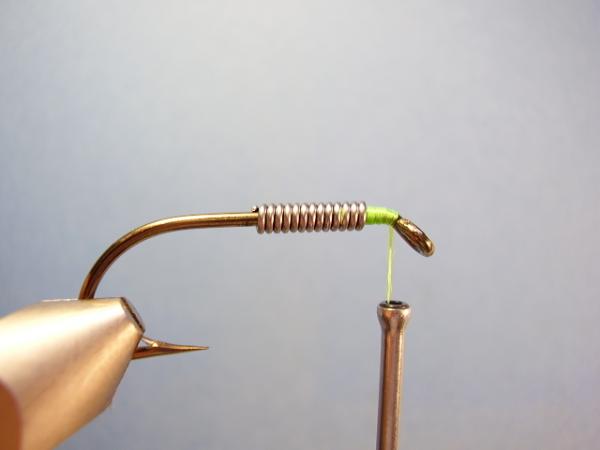
Snip tag end.
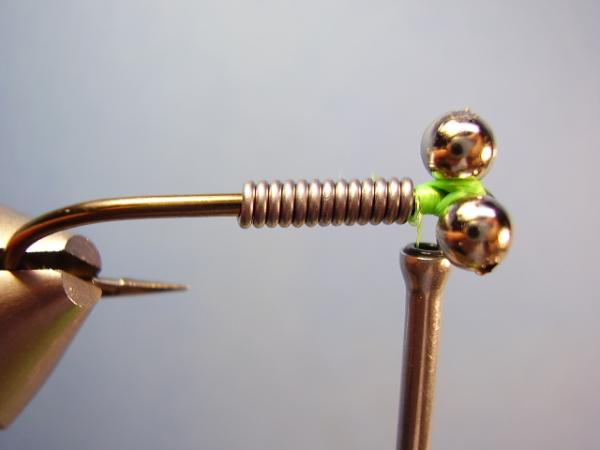
Using wire cutters, snip of a pair of beads from the bead chain rope. Place them directly behind the eye and secure them with numerous very tight "X" wraps of thread. Be sure to leave a small gap between the eyes and lead wire.

Wrap the thread back over the wire to lock it in place and take a moment to build a taper off the rear of the wire. End the thread at the start of the Limerick Bend.
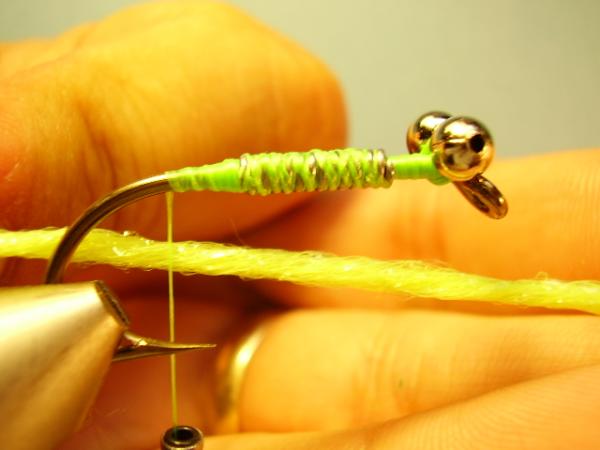
Select a thin section of Iceabou. Correct diameter should equal the 2X the hook wire diameter when lightly twisted.
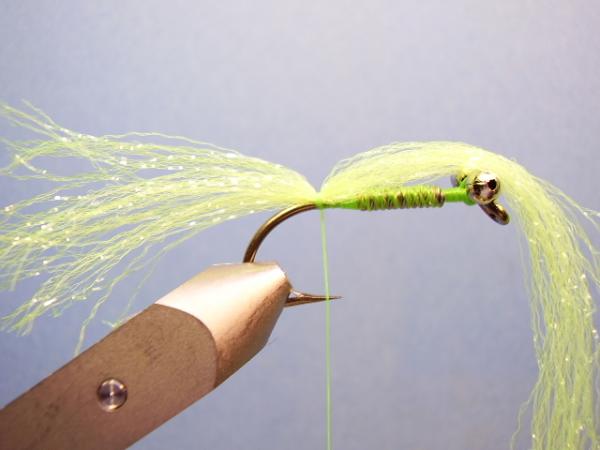
Tie the bundle in at the rear. The tail is formed by measuring 1.5 times the hook shank, the longer excess hangs to the front. Use ONLY 3 very tight wraps to secure the tail.
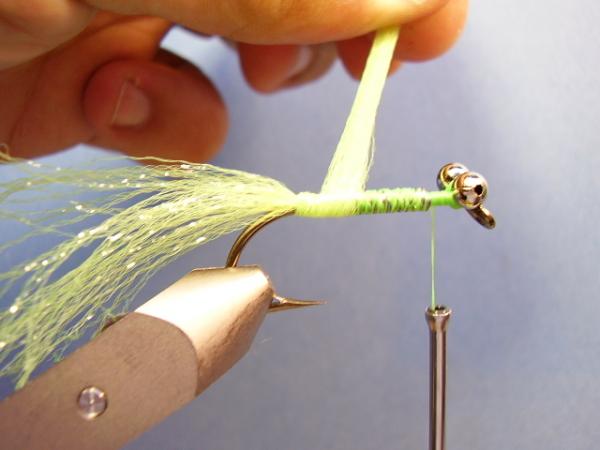
Lift up the front portion of material and make several tight wraps of thread to lock it in, then advance the thread to the front. Next, take the material and begin wrapping it forward. No need to twist the material, and only close the wraps enough to cover the underbody.
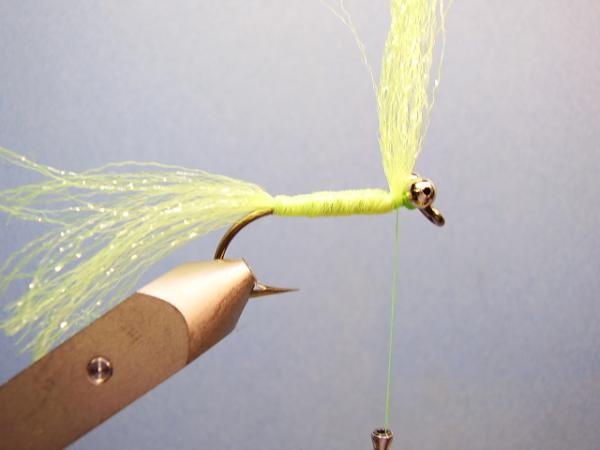
When you reach the gap behind the eye, take two tight wraps of thread behind the material and one in front.
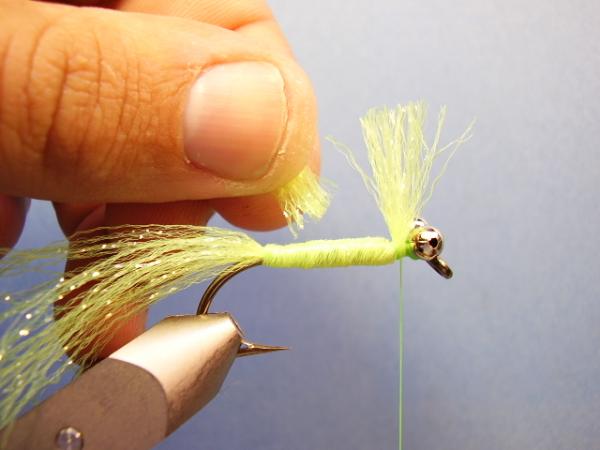
Angle the remaining section of material slightly to the rear and cut it off so it is about as long as the distance between the eye and point. Keep a grasp on the section you removed!
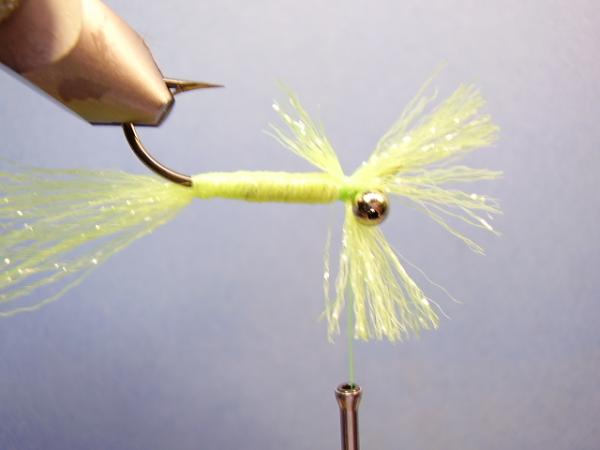
Turn the fly over (rotary vises are NICE!) and secure the section you removed to the bottom of the collar with the longest fibers to the front and equal in length to the top section. 3 tight wraps are all you need.
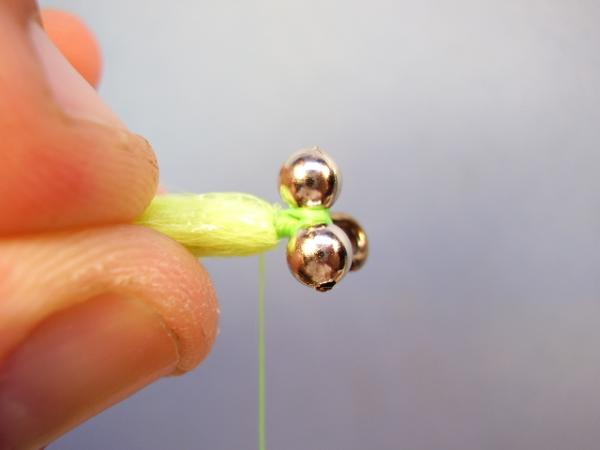
Turn the fly back over and, using your fingers, draw all the collar fibers to the rear.
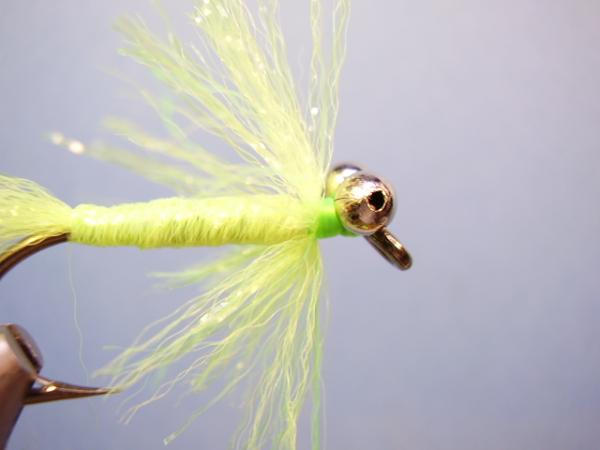
Make several wraps at the front of the collar to encourage the fibers to lay back a bit. If you planned properly, the front edge of the lead wire will have created a nice shoulder for you to press the collar against making the fibers flare and stand up a bit.
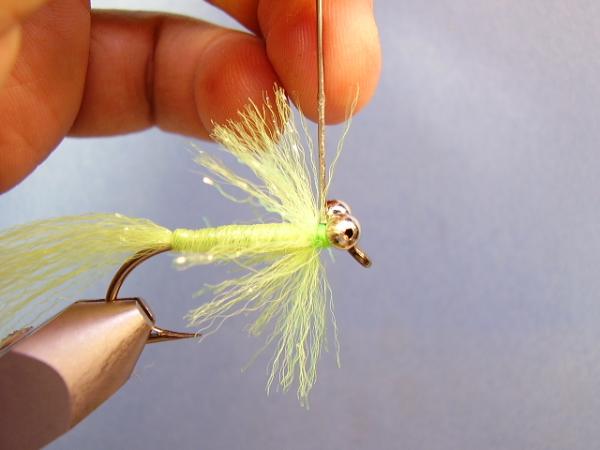
Whip finish and cement.
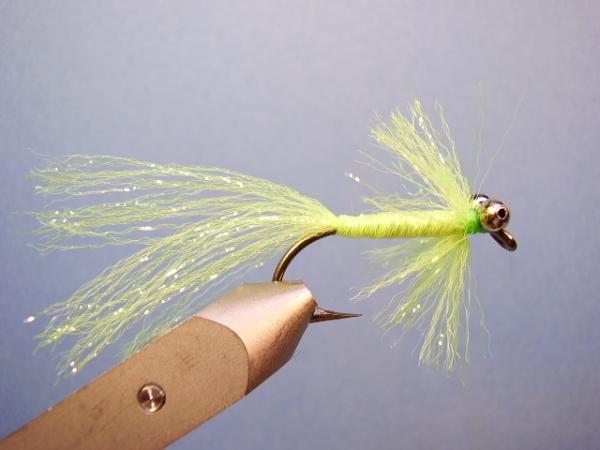
Completed side view.